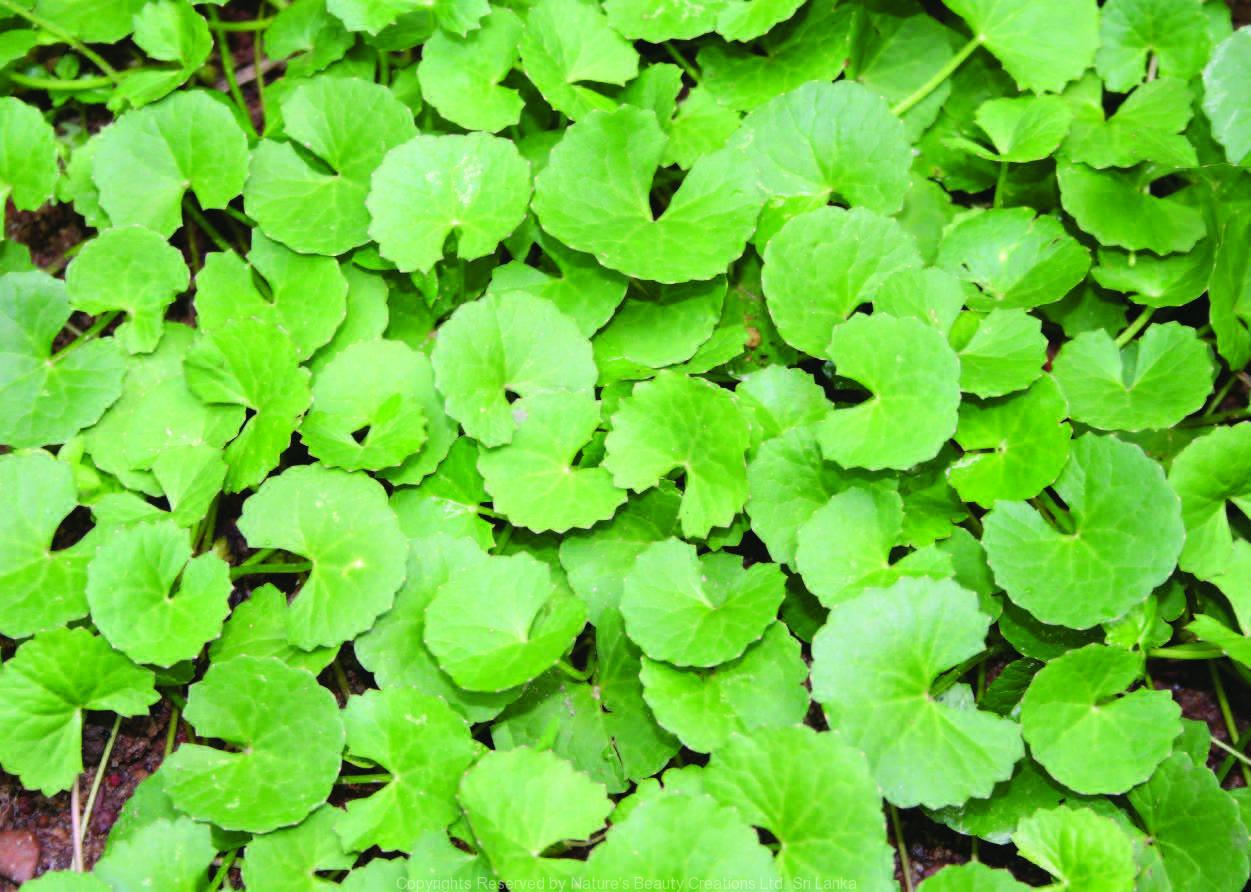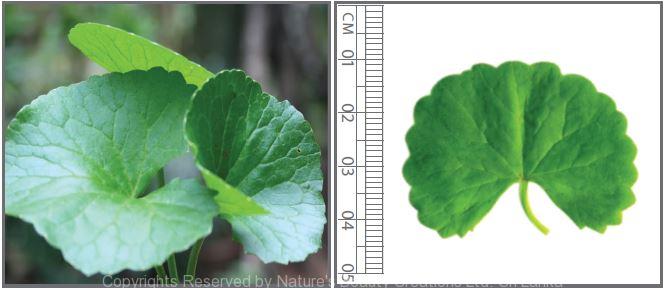

Traditional Knowledge
Useful plant parts :
Whole plant
Uses in traditional medicine :
- Crushed leaves are used in wound healing and skin lesions
- Taken as a remedy for venous insufficiency, vericose veins, high blood pressure, anxiety, scleroderma, insomnia and acts as a brain tonic
Scientific Research
Chemical constituents:
Triterpenes and their glycosides: asiatic acid, madecassic acid, asiaticoside, madecassoside, centella saponins B–D, sceffoleoside A, flavonoids: castilliferol, castillicetin from plant
Bioactivity :
Triterpenes: effective in the treatment of connective tissue disorders such as wounds and microangiopathy; ethanol extract of plant: accelerates restoring damaged neurons; castillif- erol and castillicetin: antioxidative; asiaticoside: wound healing
Clinical:
Local delivery of Centella asiatica and Punica granatum extracts reduce clinical signs of chronic periodontitis; Titrated extract of Centella asiatica (TECA) improves venous distensibility and effective in microcirculatory problems, skin inflammations, intestinal and genitourinary problems, fever and amenorrhea; cognitive functions, anxiety and mental impairment may be also affected by TECA
Note :
Leaves are used as a vegetable
References : Belcaro, G. et al., (2011), TECA (Titrated Extract of Centella asiatica): new microcirculatory, biomolecular, and vascular application in preventive and clinical medicine. A status paper, Panminerva Med, 53(3 -1), 105-18. Coldren, C. D. et al., (2003), Gene Expression Changes in the Human Fibroblast Induced by Centella asiatica Triterpenoids, Planta Med, 69(8), 725-732. Inamdar, P. K. et al., (1996), Determination of biologically active constituents in Centella asiatica, Journal of Chromatography A, 742(1-2), 127-130. Matsuda, H. et al., (2001), Medicinal foodstuffs. XXVII.1) saponin constituents of Gotukola (2): structures of new ursane- and oleanane- type triterpene oligoglycosides, centellasaponins B, C and D from Centella asiatica cultivated in Sri Lanka, Chem pharm bull, 49(10), 1368-1371. Pointel, J. P. et al., (1987), Titrated extract of Centella asiatica (teca) in the treatment of venous insufficiency of the lower limbs, Angiology, 38(1), 46-50. Sastravaha, G. et al., (2003), Adjunctive Periodontal Treatment with Centella asiatica and Punica granatum Extracts. A Preliminry Study, Journal of International academy of Periodontology, 5(4), 106-115. Shukla, A. et al., (1999), In-vitro and in-vivo wound healing activity of asiaticoside isolated from Centella asiatica, Journal of Ethnopharmacol- ogy, 65(1), 1-11. Soumyanath, A. et al., (2005), Centella asiatica accelerates nerve regeneration upon oral administration and contains multiple active fractions increasing neurite elongation in-vitro, Journal of Pharmacy and Pharmacology, 57(9), 1221-1229. Subban, R. et al., (2008), Two new flavonoids from Centella asiatica (Linn.), Journal of Natural Medicines, 62(3), 369-373.
Copyrights Reserved By
Natures Beauty Creations



